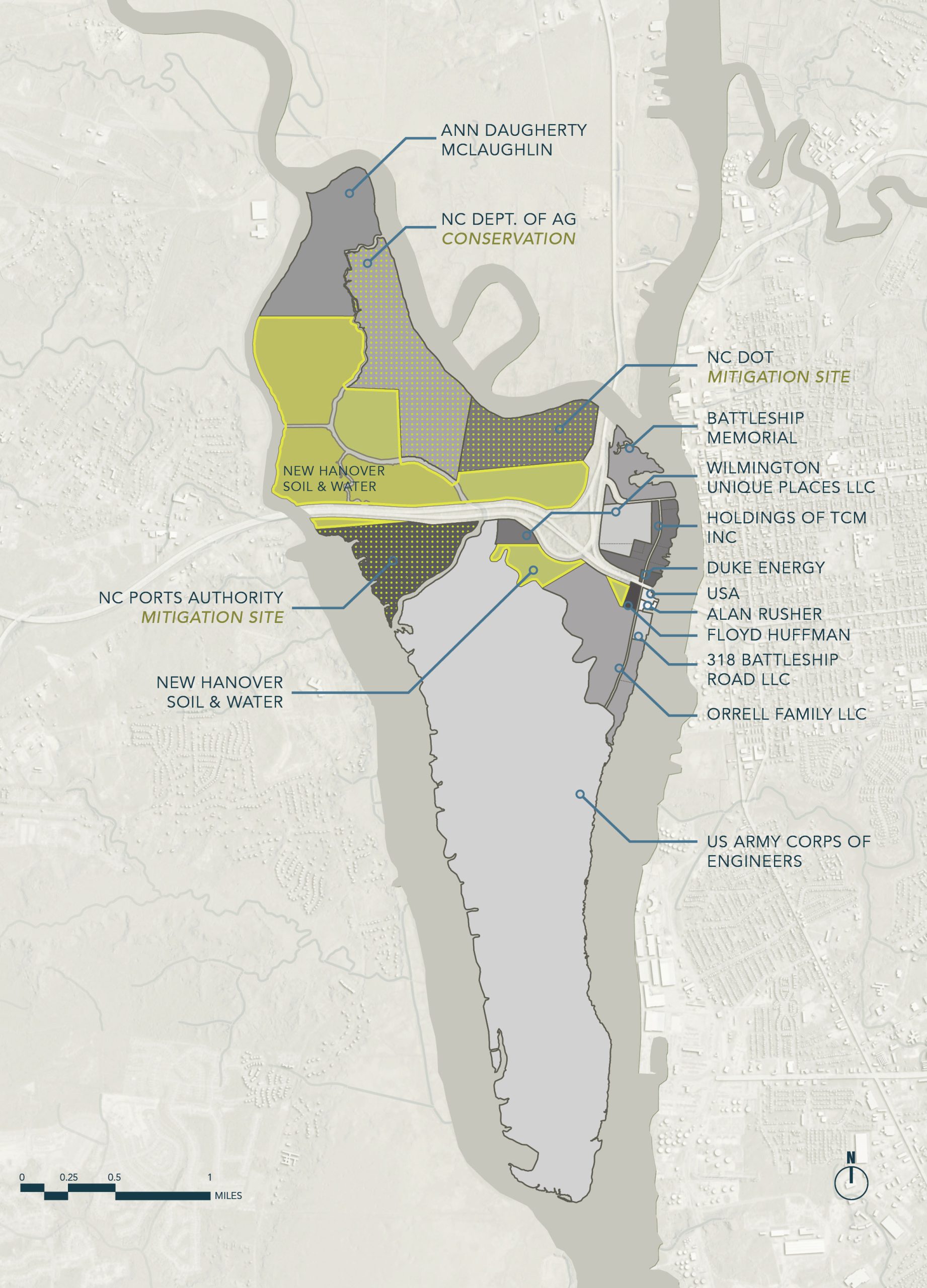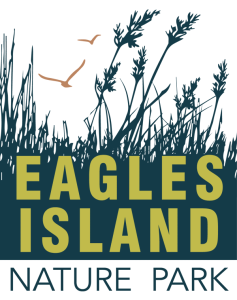Project Background
The effort to preserve Eagles Island has been ongoing since 2001 and has taken many forms over the years. Conservation efforts were first sparked with a private donation of a 52-acre tract to the New Hanover Soil & Water Conservation District. After an environmental assessment identified the numerous ecological values present within the island’s vast wetlands, momentum grew around the idea of conserving Eagles Island as a natural area and drove acquisition of additional land through private donations and funding sources. In an effort to describe the existing conditions on the island, Land Management Group and Environmental Sciences, Inc. collaborated to compile existing ecological and historical research and conduct biological surveys. The resulting report, Eagles Island: A History of a Landscape, was published in 2011 and remains the most comprehensive source of information on Eagles Island. To further the conservation goals for the Island, the Eagles Island Coalition, a group of public and private entities committed to an integrated approach to maximize the public benefits of the island’s resources, was formed. In 2015, the Coalition produced the Eagles Island Conservation Management Plan that explored the future of the island‘s natural and cultural resources, identified goals, threats, opportunities, and potential partners.
The Eagles Island Central Park Task Force (EICPTF), co-chaired by Evan Folds (elected supervisor of the New Hanover Soil & Water Conservation District) and Lloyd Singleton (director of the N.C. Cooperative Extension, New Hanover County Center), is currently composed of members representing diverse backgrounds and interests with the common goal of establishing Eagles Island Nature Park as a world-class recreational destination with a focus on conservation and education. This group envisions a park that brings joy to all people, where the past informs the present, meets the future, and people can learn to thrive with nature. Eagles Island Nature Park invites the world to our region, and unites the counties, cities, and communities of Southeastern North Carolina through conservation, education, and recreation.
.
Patchwork of Ownership is a Significant Issue
The patchwork of ownership on Eagles Island is a significant constraint concerning the establishment of Eagles Island Nature Park. The division of parcels on the Island represents a vast array of public and private ownership conditions and varying degrees of land use and management. Six parcels, representing approximately 520 acres, are owned and/ or held in conservation easements by the New Hanover Soil & Water Conservation District. These parcels can currently support programming and public access as part of Eagles Island Nature Park but are limited in accessibility due to isolation from existing infrastructure and the prevalence of wetland conditions. Separately, several of the larger parcels on the island, totaling about 485 acres, are owned and/or held in conservation easements by state agencies including the North Carolina Department of Transportation, the North Carolina Department of Agriculture, and the North Carolina Ports Authority. These areas may support the Eagles Island Nature Park programming vision. Therefore, conversations with these state agencies should be initiated to pursue shared-use agreements for public access, if desired. The largest single parcel on Eagles Island is under the jurisdiction of the United States Army Corps of Engineers, and while most of the area is actively used as a dredge spoil storage and disposal area, a shared-use agreement for public access could also be pursued within the northern portion of this parcel.
Lastly, the series of smaller parcels along the eastern shore of Eagles Island is predominantly in private ownership, with some of the land in industrial use. This area has been extensively modified by past and present land uses, and is essentially the only part of the island with soils and elevation suitable for development. As such, there has been ongoing interest in private residential or mixed-use development in the area directly south of the USS North Carolina Battleship Museum.

Ships Graveyard
The shoreline of Eagles Island, directly across from downtown Wilmington, is a “ships graveyard,” with some 37 sunken ships, barges, and other maritime remnants. The ships are included in the National Registry of Historic Places and protected by the federal Abandoned Shipwreck Act of 1987. The vessels are also included in the Historic Wilmington Preservation District.

